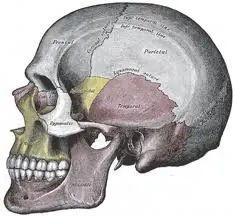Maxillofacial and cranial trauma are common phenomena in severe motor vehicle accidents or falls from great height. There is a large variety of traumas that can happen, from facial fractures, cranial fractures and fractures that extend from the cranium to the facial bones, called cranio-maxillofacial fractures. One study looked through a large computerized database to see which kinds of injuries were seen under which conditions of injury. They looked at a period of 10 years from 1991-2000 and found 9,500 patients who were admitted to the hospital following cranio-maxillofacial injuries. They were all treated at the University of Innsbruck hospital.
Doctors and researchers looked at the cause of the injury, the gender and age of the patient, the mechanism and type of injury, the presence of soft tissue trauma in the patient and the presence of dentoalveolar trauma, facial fractures and nonfacial injuries.
The researchers found five major categories of trauma in these patients. In a total of 38 percent of cases, the injury happened as part of daily life. In 31 percent of injuries, the mechanism of injury was sports; in 12 percent of cases, it was violence that caused the injury; 12 percent were motor vehicle accidents causing maxillofacial trauma; in five percent, it was a work injury that caused the facial injury. Two percent were miscellaneous types of injuries.
Approximately 3600 patients or 37.5 percent had facial bone fractures and 4800 or so had dentoalveolar fractures. This was about 50 percent of all patients treated at the hospital for these types of injuries. Soft tissue injuries were common at 7800 injuries. There was a male to female ratio of more than 2 to 1 and the mean age was 25.8 years but both of these factors varied greatly, depending on the injury mechanism. For example, there was a higher risk of facial bone fractures in men, an equal risk of soft tissue injury in men and women and a higher incidence of dentoalveolar facial trauma in women.
Those who had facial trauma tended to get facial bone fractures at 22 percent, soft tissue lacerations and other lesions at 58 percent and more dental trauma among those who were injured during life and play activities. The probability of sustaining a soft tissue injury and trauma to the teeth was highest in sports activities such as football, soccer and other team sports. The rate was about 12-16 percent of the time.
The researchers used this information to tell craniofacial surgeons what kind of injury to expect and which kinds of injuries go together depending on the circumstances of the accident. They also felt that the government should consider legislation that helps prevent these kinds of preventable injuries from happening. Most victims were young and many were involved in sports-related trauma so that they could be required to wear facial and dental protection while playing sports or participating in other high risk activities.
In facial trauma, the older person represents only about 4.4 percent per year of age. They are more prone to getting facial fractures when compared to soft tissue injuries that only increase 2 percent per year of age. Younger people are much more prone to getting dentoalveolar trauma with a decrease of 4.5 percent per year of age.

